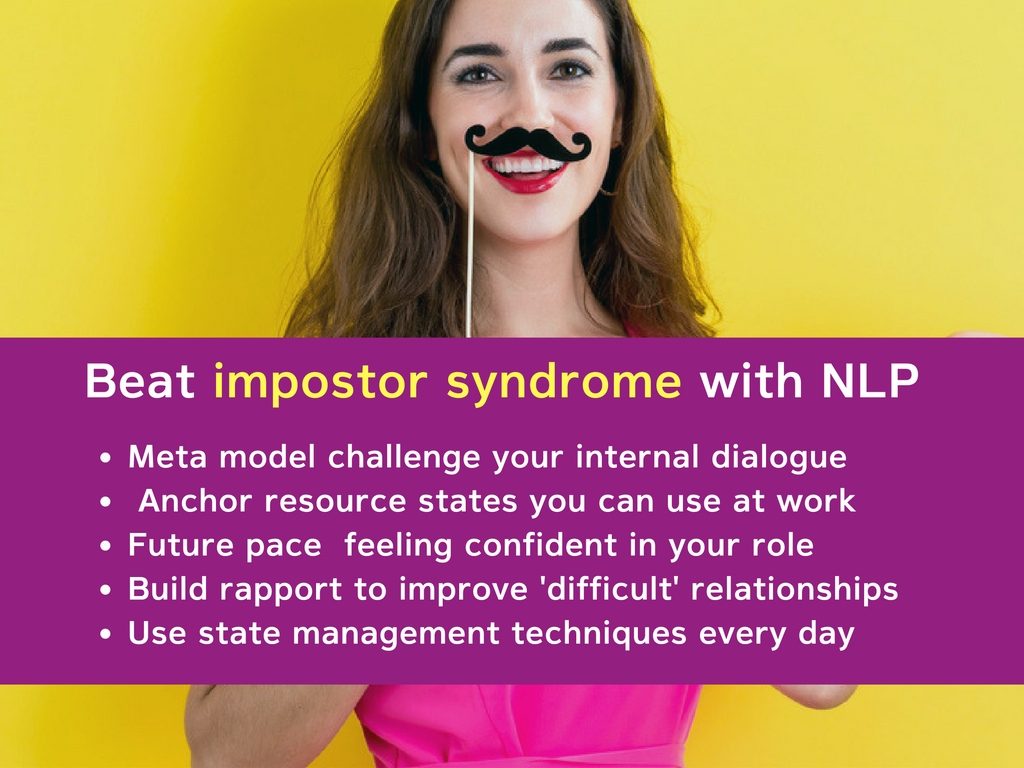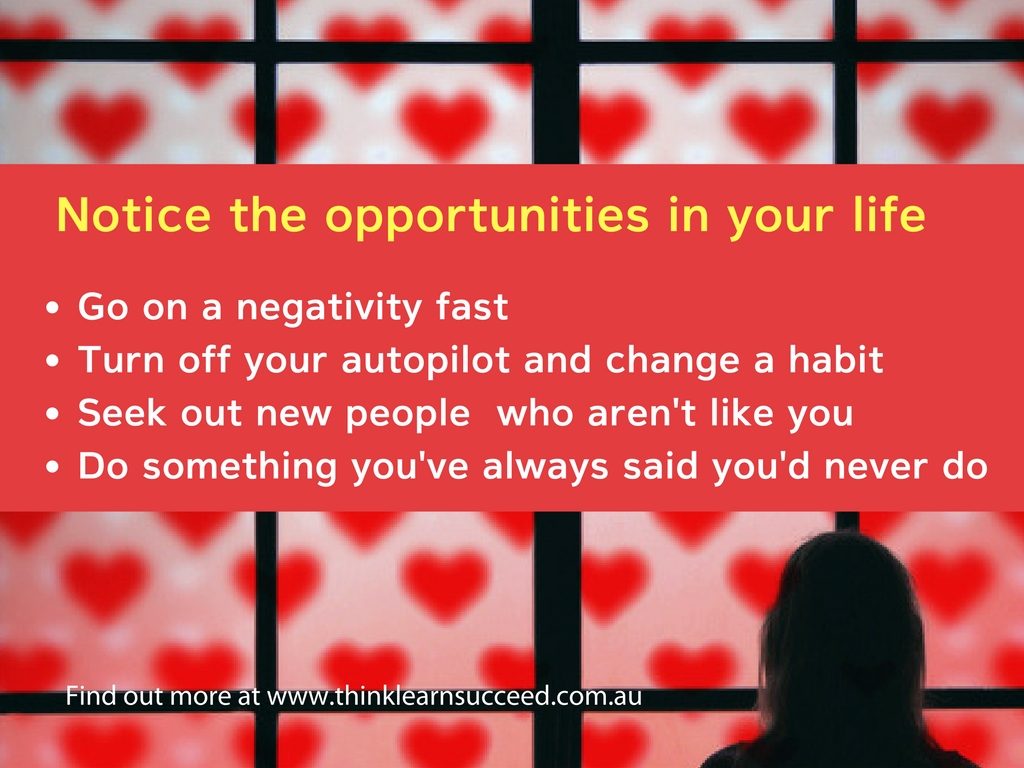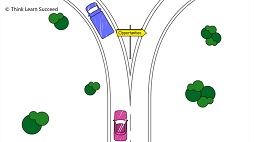Do you secretly fear you’re not up to doing your job? If you experience these feelings frequently, there’s a good chance you might be suffering from ‘imposter syndrome’. This is a strong and pervasive fear that you don’t really have what it takes to succeed.
 So, if you think that you’re suffering from imposter syndrome, what can you do? Here are five ways you can use NLP to boost your confidence and stop imposter syndrome in its tracks.
So, if you think that you’re suffering from imposter syndrome, what can you do? Here are five ways you can use NLP to boost your confidence and stop imposter syndrome in its tracks.
Meta model challenge your internal dialogue
The meta model is a linguistic toolkit for challenging limiting language. People who suffer from imposter syndrome tend to have highly critical self-talk. You can use meta model questions to challenge this type of self-talk and shift to more constructive inner dialogue. To do this reword definitive language like, ‘I don’t know how to do this’ with alternative statements like ‘I can find out how to do this’. Also work to banish perfectionist self-talk. Instead of saying, ‘I will work back and finish it properly’ say to yourself, ‘I will finish it as well as I can, given the time constraints I’m under’. Listen to my free podcast Beat Imposter Syndrome with NLP for more advice on practical tips. Read more
 Lately, there has been a lot of discussion about how disparity in pay rates is impacting professional women. Attention is being paid to the consequences of pay gaps between men and women. Whether it’s framed as women working for free one day a fortnight or losing hundreds of thousands of dollars over their working lives, it’s obvious that the problem is impacting in very real ways.
Lately, there has been a lot of discussion about how disparity in pay rates is impacting professional women. Attention is being paid to the consequences of pay gaps between men and women. Whether it’s framed as women working for free one day a fortnight or losing hundreds of thousands of dollars over their working lives, it’s obvious that the problem is impacting in very real ways.
 I love people-watching. As a trainer, of course, I have ample opportunity to do so. While groups are completing roleplays or activities, it’s my job is to observe their body language patterns and communication habits. Many years of closer observation have brought my attention to a problem which creates ‘glass ceiling moments’ for female negotiators. Here’s what I’ve noticed, when women step into senior roles, body language patterns that previously helped them in negotiation begin to backfire. For example, patterns of smiling frequently often can help a woman be successful in a junior role. When she’s attempting to negotiate as a leader, however, smiling too often will reduce her credibility and be perceived as an anxious habit.
I love people-watching. As a trainer, of course, I have ample opportunity to do so. While groups are completing roleplays or activities, it’s my job is to observe their body language patterns and communication habits. Many years of closer observation have brought my attention to a problem which creates ‘glass ceiling moments’ for female negotiators. Here’s what I’ve noticed, when women step into senior roles, body language patterns that previously helped them in negotiation begin to backfire. For example, patterns of smiling frequently often can help a woman be successful in a junior role. When she’s attempting to negotiate as a leader, however, smiling too often will reduce her credibility and be perceived as an anxious habit.




 Are you plagued by negative self-talk? Then it’s time to change your thinking habits. Find out how in this inspiring video on how to think positively, even in tough situations. Learn how to shift your negative self-talk by using cognitive reframing techniques. Change what your inner voice says and the tone you use when ‘talking to yourself’.
Are you plagued by negative self-talk? Then it’s time to change your thinking habits. Find out how in this inspiring video on how to think positively, even in tough situations. Learn how to shift your negative self-talk by using cognitive reframing techniques. Change what your inner voice says and the tone you use when ‘talking to yourself’. 